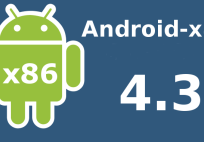In the last year, wireless service providers have been reaching out to those in lower income brackets by offering more affordable price plans and upgrade services. Just within the last month in fact, AT&T, T-Mobile, and Verizon have all initiated new upgrade plans that allow customers to upgrade their devices far more often then the standard, once every two years.
In its second big move this year, T-Mobile chief executive officer John Legere announced July 10 that for an extra $10 a month, T-Mobile customers will be enrolled in its “Just Upgrade My Phone” plan — a rapid upgrade program that allows for device upgrades twice a year. AT&T followed suit shortly after by introducing their once-a-year upgrade plan, AT&T Next. As a retort, and to stay in line with the other two major wireless providers, on July 18 Verizon Wireless announced Verizon Edge — a bi-yearly upgrade plan. Of course everything comes at a price, and each one of these providers come with its own set of stipulations. Unlike T-Mobile, AT&T and Verizon did not attach an additional monthly fee to their new programs. With all three programs, customers are able to spread the full retail value of their device over an extended period of time.
While seemingly noble in its pursuit of redefining a “stupid, broken and arrogant industry,” as Legere put it, T-Mobile JUMP subscribers will be required to relinquish their old phone in exchange for a new one. For the average user, this stipulation is most likely doable; however, for the power user who still owns every smartphone ever purchased, it may be a deal breaker. On the positive side, subscribers will no longer have to worry about additional insurance coverage as the plan covers loss, damage, and theft at an additional cost per upgrade. Legere said, “You are covered if you drop it in the toilet or even if you run it over with your car.” With JUMP, their is no longer a need to make up falsehoods on why you need a new phone — the coverage is extended to those who desire the latest and greatest release, as well as those undergoing human error or technical issues. In addition, upgrades require a down payment, as well as monthly fees which span over a two-year period. The bright side? Since T-Mobile announced its “uncarrier plan” in March, there is no need to worry about committing to a contract .
Although AT&T Next offers its upgrade plan free and clear of contracts, down payments, and upgrade, activation, and finance fees, it has been the cause of criticism by its competitor, T-Mobile. Mike Sievert, T-Mobile’s chief marketing officer accused AT&T of basically charging its customers for the same phone twice. While T-Mobile provided lower service rates after doing away with phone subsidies, he claimed AT&T has not done so. He said AT&T continues to charge the same monthly rates, while eliminating its discounted phone program. “Our friends at AT&T have really gotten it wrong,” Sievert said. “Far from being disruptive innovation, it’s just another way for (AT&T) to take more money from the customer than ever.” AT&T spokesman Fletcher Cook responded by saying its program gives customers another option in addition to the traditional two-year phone subsidy program. Through Next, customers purchase the latest smartphone or tablet with no money upfront, aside from sales tax, and low monthly payments for 12 to 20 months. The 20-month option is available for those who want to own their device free and clear; while the 12-month option is for those who are willing to trade in their dated device in return for a shiny new one. If trading in a device, it must be in working condition to qualify for a new upgrade. AT&T Next will be launching nationwide July 26.
In addition to following T-Mobile in its pursuit to provide more cost-saving measures to its customers, AT&T announced two new price tiers to its Mobile Share program, July 22. Beginning July 26, families enrolled in the plan will now be able to choose from 300MB and 2GB data allowances,costing an additional $20 or $50 respectively. Currently the least expensive option is 1GB for $40, and the next level up was 4GB for $70. “Our customers are living mobile lives, and our new Mobile Share plans give them even more options to design a plan that meets their unique needs,” Mark Collins said AT&T Mobility senior vice president voice and data products.
Last to jump on the bandwagon was Verizon Wireless. Like its rivals, Verizon acknowledged July 18 that technology is an ever-changing industry. As such, waiting two-years for an upgrade is an almost impossible standard to impose on its customers. With Verizon Edge, that wait has been cut to six-months in some cases to help satisfy the inner geek in you. Effective Aug. 25, customers on the Share Everything Plan will be eligible for the new device payment plan. When purchasing a new device, customers will automatically receive the 24-month payment plan, with the only upfront cost being the first months payment. After the first six months, customers who have already paid off half of the device’s retail value have the option of initiating another upgrade.
Criticism has been raised across the board as to the real benefits of these upgrade plans. While T-Mobile remains the critique over AT&T Next, Buisness Insider writer Steve Kovach dismantles the entire operation labeling it a rip-off and “something no budget-aware consumer should ever consider signing up for.” While it may seem appealing to pay a small amount of money for a brief amount of time in order to satisfy your mobile craving, his recommendation is to steer clear of the new upgrade plans “unless you really, really need to upgrade your phone every six months.”








![[App] Lollipop Land; 5.0 easter egg released to play store as game](../../landofdroid.com/wp-content/uploads/2014/11/wpid-wp-1415372216626-resize-204-142.png)










